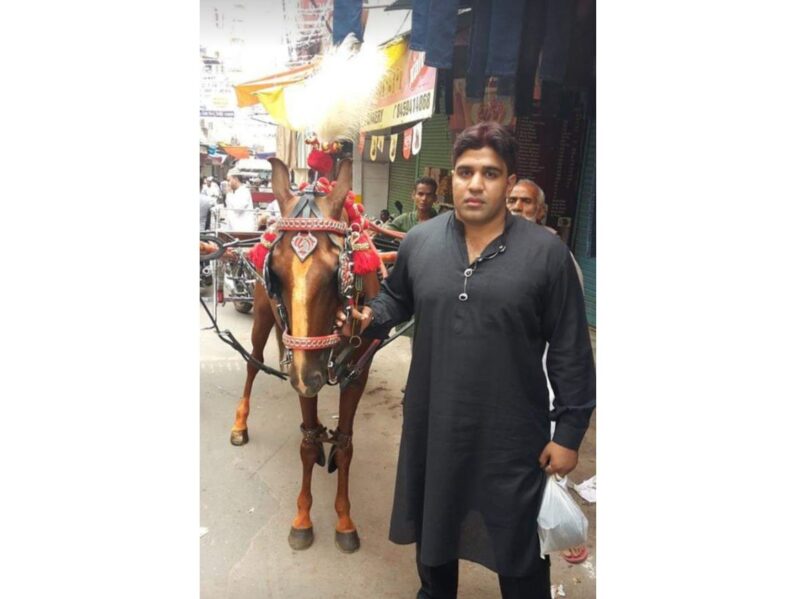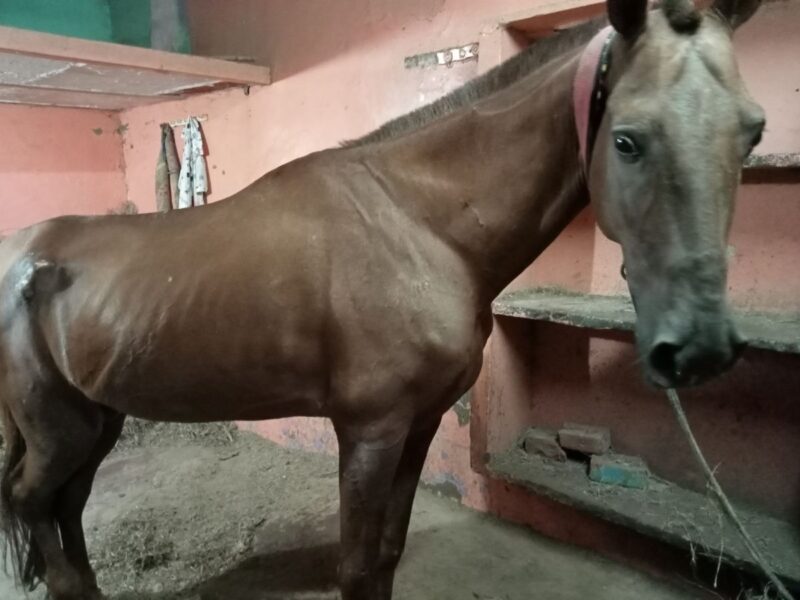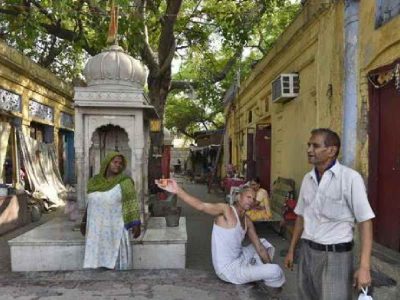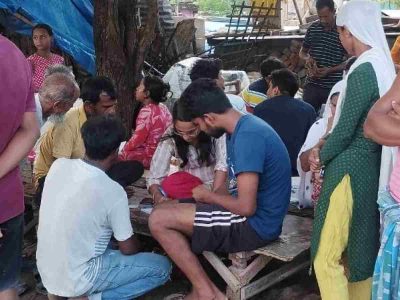“The silver one is Ali Da Malang and the brown one is Hitler”, says Yash, a 27-year-old ghudsawar (horse rider) in old Delhi, as he feeds water to the two horses in the stable. “We named him after a famous Pakistani horse who is also named Hitler”, he laughs.
Yash’s father Hari was a famous ustad (teacher) of old Delhi. Yash is currently looking after the horses of his father’s shagirds (students). “They are like my children. My day begins with them and ends with them. I don’t have any other shauq (hobby) because taking care of them gives me so much satisfaction”, Yash shares.
His day begins at dawn with a mandatory visit to the stable to ensure that the horses are fed and massaged properly. “I make sure that I am paak-saaf (pure and clean) when I visit the stable because they are Allah ki sawari (God’s ride)”, he says.
Meanwhile, a horse steps down the pavement and Yash waves his hand to direct it upwards, making a growling sound accompanied by the click of his tongue. “They understand me very well”, he smiles.
Yash often takes the horses for a ride early in the morning or at night to avoid any traffic or crowd. “They are fast. If I wander around during the day, people may be harmed. And then there is the police. So, the usual time is during the night or at dawn”, he explains. However, if the policemen do stop him to interrogate, he says that he has the permission to take the animal for a stroll.
Elaborate structures
Like many traditional sports in India, the community of ghudsawari is also organized into graded positions. The ustads (Urdu for teacher), pass their knowledge to their shagirds (students). In the middle are the khalifas, who take the position through years of apprenticeship and trust. They work as a mediator between ustads and shargirds and possess the most esteemed authority in the ustad’s party. Those who develop an interest in the sport are called selanis (wanderers) who often take the role of students once they find their rightful teacher.
Bilal has been a horse rider for the last 25 years and belongs to a very famous ‘party’ in the city. The 50-year-old owner of a famous hotel in old Delhi says, “Every Thursday, all the selanis, shagirds, ustads, and khalifas gather with their horses at the foot of Firoze Shah Kotla as a part of age-old tradition. Thus, we continue our legacy which has existed for hundreds of years.”
The tradition that Bilal talks about takes place on the road opposite to the dargah of Syed Badruddin Samarqandi, a famous sufi of Delhi. On every Thursday, a number of horse riders gather there to announce the qualities of their respective horses and to fix a ride. Although the practice was significantly affected by the lockdown and the heatwaves during summers, it is ardently followed during winters. Some horse riders also visit the place on Sundays.
“We offer the dargah our salutations, like our ancestors did”, Yash remarks. The tradition is observed irrespective of the religion or social landscape. “It is for all of us, the horse riders of Delhi. My father, who was a Hindu, had many Muslim shagirds and he used to visit the dargah like all of them”, he explains – something which Bilal affirms.
Festive link
Apart from these customary visits, there are other times when the tradition is observed. “On every Eid’s tarr, we used to ride our horses from Okhla to Kotla Firoz Shah”, Bilal states. A tarr is an Eid celebration that takes place on the second day. “We just call it tarr because we get to celebrate and ride our horses”, he adds.

The popularity of the sport has significantly declined. In Delhi alone, there were multiple ustads, but now, only a few of them are left. “There are only a few of them that are alive. One such ustad is Ustand Nandu”, Bilal says.
Usually, horse-riding is done either on the back of the horse or on the trolley tied on its back. In Delhi, there is popularity in the community to ride their horses with the trolley. “These are customs specific to the states or cities. For example, the chaal-chalan (culture) in Bihar or Allahabad is that of riding horses on the back”, Bilal explains.
Multiple constraints
Rising prices and the expenses of labour make it hard to continue the sport. “Everything is four times the price that it used to be. Items for their diet, like murabba, milk, dry fruits, and grass, are very costly which an ordinary person can not afford”, Bilal says.
Lack of space is another reason for the decline of the tradition. A lot of horse riders in the capital gave up on their hobbies due to unavailability of proper accommodation and track to ride their horses. “Every horse has the capacity to run a few kilometres. If they don’t do it, they might catch some illness or become inactive”, he explains.
“A lot of tournaments used to take place before. Now, due to the government and a lot of fraud incidents, they have significantly decreased”, says Bilal. He says that there have been cases where tournaments have been cancelled because of daylight cheating – sometimes leading to a fight between two parties that often become abusive.

He remembers the last tournament that took place in Delhi was before the lockdown. However, he says that this will become more active during the winters since summer limits the sport and affects the health of the horses. “You will see a lot of ghudsawar in Firoze Shah Kotla as well”, Bilal adds.
He believes that although the sport may look like an adventure to man, it has to be followed with love and care. “A lot of people in the community play party politics and make the sport ugly which eventually harms the innocent horses. If you don’t love horses, it doesn’t make any sense”, he says as he proudly looks at Shera, a chaal-baaz horse standing in the stable behind him.
For more stories that cover the ongoings of Delhi NCR, follow us on:
Instagram: instagram.com/thepatriot_in/
Twitter: twitter.com/Patriot_Delhi
Facebook: facebook.com/Thepatriotnewsindia





